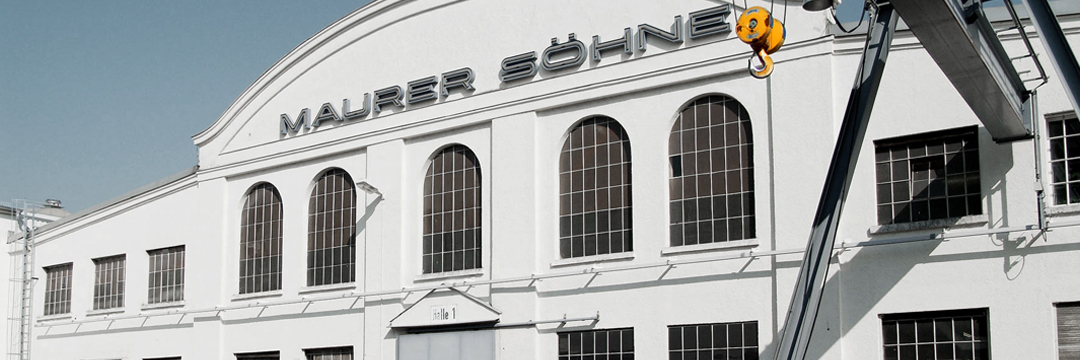
Expansion Joint Opens Horizontally at the Middle of the Bridge

Glasgow. The new Clyde Crossing in Glasgow is a double swing bridge that opens at the centre, thanks in part to the special expansion joint from MAURER (Type DS 4 HL). With its unique hydraulic system, it can control the opening and closing of the bridge, as well as compensating for expansions caused by temperature, wind and traffic load like a conventional expansion joint.
The Clyde Crossing is Scotland’s latest iconic feat of engineering. It crosses the River Clyde in the Glasgow suburb of Yoker and connects the neighbouring towns of Clydebank and Renfrew. The imposing white steel bridge consists of two swing bridges and was built by a joint venture between JV Hollandia Infra (southern half) and Smulders Iemants (northern half). Two pairs of pylons close to the river bank extend outwards like cranes and pivot with the bridge when it opens. The Clyde Crossing is 184 m long and 12.3 m wide, making it suitable for vehicles, pedestrians and cyclists alike.
Bridges of this size usually have an expansion joint at each end next to the abutments. This bridges the gaps in the structure required to compensate for horizontal expansions caused by wind, traffic loads or temperature differences, for example.
On the new double swing bridge, however, the pivots are located so close to the abutments that it was neither necessary nor possible to have expansion joints there. As the longer bridge sections were located at the middle of the river, the expansion joint also had to be there, at the point where the bridge opens. From a technical perspective, this was a unique challenge. It called for a single system that would combine the horizontal opening and closing of the swing bridge, as well as the longitudinal expansion and rotation.
An expansion joint that does it all
“The initial enquiry came back in 2019, which shows just how challenging the project was”, recalls Jeroen Melief, Branch Manager at MAURER Netherlands BV. The development of this special construction involved engineers from multiple companies. MAURER took the lead with its experts in Munich, Lünen and Culemborg. The construction also had to comply with both Eurocode and the British standard, while the highly intensive development and coordination phase was delayed by the effects of Brexit and the pandemic.
The solution was based on modern MSM® swivel joist expansion joints. Similar systems have been used successfully in demanding bridge projects for decades. They allow for longitudinal movements of up to 3 m and more, as well as rotations in all directions. The parallel profiles, also known as intermediate beams, sit on top of the swivel joists and run transverse to the direction of travel. The joists run at a slight angle to the direction of travel, therefore ensuring that the bridge’s opening and closing movements are spread evenly across the sealing elements between the profiles.
On the latest generation of MAURER’s swivel joist expansion joints, the intermediate beams run in w-shaped MSM® bearings instead of simple elastomeric ones. Known as a catamaran support, this improves the performance of the entire expansion joint. The MSM® sliding material and special bearing shape allow the profiles to slide more easily and precisely over the joists. This prevents restraints and increases the service life.
Special features in Glasgow
For the project in Glasgow, the already sophisticated MSM® swivel joist expansion joint was also fitted with hydraulic control, sliding bearings and defined contact surfaces, before being installed on the southern swing bridge:
- The expansion joint sits on a table-like structure and can move without restraints on the special MSM® bearings.
- Just before the bridge pivots and opens, the hydraulic system on the underside retracts the expansion joint. This requires just a few millimetres prior to the bridge opening, as the sides of the bridge meet at an angle of 84 ° rather than at a right angle.
- As the bridge opens out further, the hydraulic system closes the expansion joint completely to prevent it from protruding.
- The northern bridge without expansion joint is designed so that the joint sits precisely.
- When the bridge closes again, the hydraulic system extends the expansion joint far enough for it to reach the north side.
- The necessary contact pressure is controlled precisely. It has to be high enough to allow even heavy goods vehicles to drive over safely. There is no manual locking system.
An extra 40 cm
MAURER provided an MSM® swivel joist expansion joint measuring 13.2 m in length and with a movement of 320 mm (MAURER type DS 4 HL modular joint). Unlike most conventional expansion joints, it is only welded on one side. As a result, MAURER also supplied a 40-cm-wide strip to bridge the gap to the northern side. The steel structures are protected by MSM® strips in the contact surface.
Both halves of the bridge were produced in Rotterdam/Holland. There, the entire special construction was installed on the southern bridge at the start of 2024. The hydraulic system was also put through its paces here by an external specialist company. “For such a unique construction, we wanted to be sure”, explains Melief. “The greatest success was the moment when we tested it and it worked exactly as we had imagined.” Once the system arrived in Glasgow in April, it was simply a matter of making a few small adjustments.
Renfrewshire Council of Glasgow City Region plans to approve the bridge for use by traffic before the end of this year.
Контакт c головным офисом
MAURER SE
Frankfurter Ring 193
80807 Munich
Germany
Phone +49. 89. 32394-0
Mail







